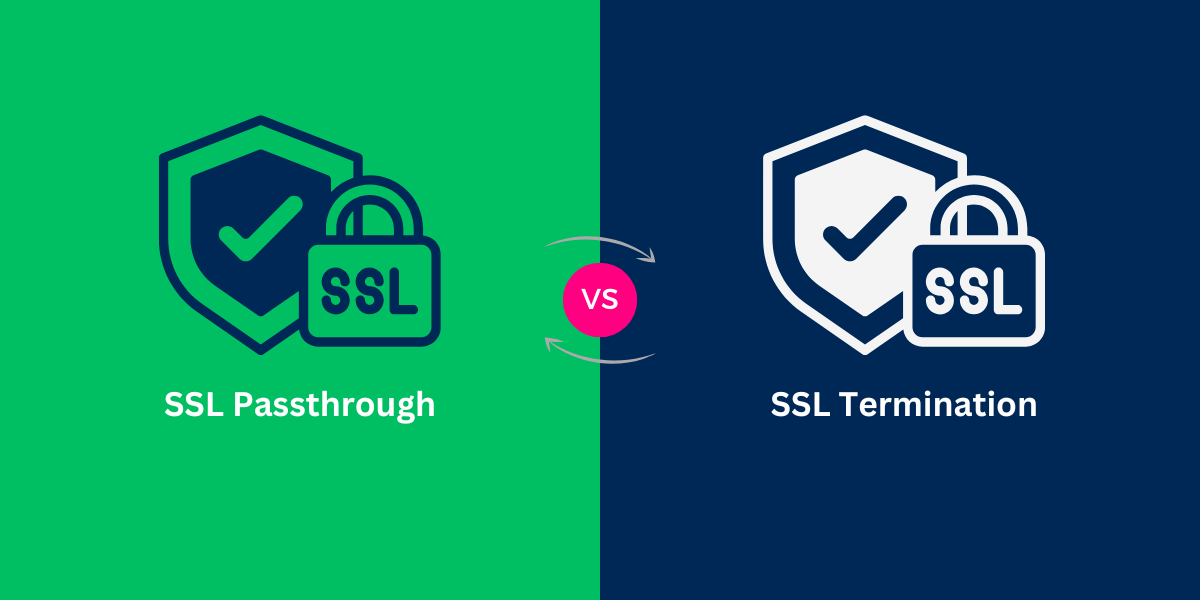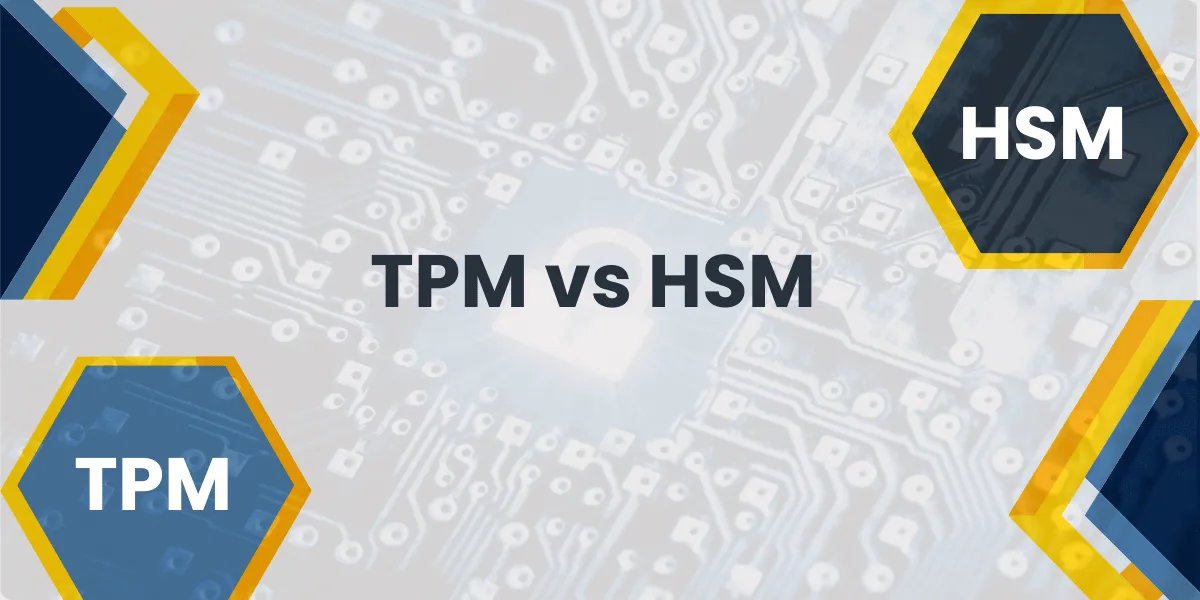This decision affects security measures as well as operational complexity and system performance. The selection between these two methods requires essential knowledge for architects and DevOps engineers and security professionals who build secure web applications.
Recent industry surveys show that more than 78% of enterprises face challenges with SSL/TLS certificate management complexity which makes this decision vital for operational efficiency.
What is SSL Passthrough?
SSL Passthrough functions as a load balancing technique which enables encrypted traffic to bypass decryption by passing directly through the load balancer. The load balancer sends encrypted SSL/TLS traffic to backend servers which perform the decryption operation.
How SSL Passthrough Works
- Client Connection: Client establishes SSL/TLS connection
- Load Balancer Forwarding: Load balancer forwards encrypted traffic based on TCP-level information
- Backend Decryption: Backend server decrypts the traffic and processes the request
- End-to-End Encryption: Encryption remains intact throughout the entire connection
Key Characteristics of SSL Passthrough
- Transparent Operation: Load balancer operates at Layer 4 (TCP level)
- Certificate Management: SSL certificates are managed on backend servers
- Limited Inspection: Cannot inspect HTTP headers or application-layer data
- Preserve Client IP: Maintains original client IP address information
- Simple Configuration: Minimal load balancer configuration required
Advantages of SSL Passthrough
- Enhanced Security: Maintains end-to-end encryption
- Reduced Load Balancer Overhead: No CPU-intensive decryption/encryption
- Simplified Certificate Management: Centralized on backend servers
- Better Compliance: Meets strict security requirements for sensitive data
- Lower Latency: Minimal processing at load balancer level
Disadvantages of SSL Passthrough
- Limited Load Balancing Options: Cannot use content-based routing
- No Content Inspection: Cannot perform application-layer filtering
- Debugging Challenges: Difficult to troubleshoot encrypted traffic
- No Caching: Cannot implement caching at load balancer level
- Reduced Observability: Limited visibility into application metrics
What is SSL Termination?
SSL Termination operates as SSL Offloading to enable the load balancer to decrypt incoming SSL/TLS traffic which it then processes before sending it either as plain HTTP or re-encrypted HTTPS to backend servers.
How SSL Termination Works
- The client initiates an SSL/TLS connection with the load balancer.
- The load balancer performs decryption of the traffic through its SSL certificate.
- The load balancer can perform content inspection and modification and content-based routing.
- The system sends traffic to backend servers either through HTTP or HTTPS encryption.
Key Characteristics of SSL Termination
- Application Layer Processing: Operates at Layer 7 (HTTP/HTTPS level)
- Certificate Centralization: SSL certificates managed at load balancer
- Full Content Visibility: Can inspect and modify HTTP headers and content
- Advanced Routing: Content-based routing and intelligent load balancing
- Performance Optimization: Enables caching, compression, and other optimizations
Advantages of SSL Termination
- Advanced Load Balancing: Content-based routing and sticky sessions
- Performance Optimization: Caching, compression, and content optimization
- Enhanced Monitoring: Detailed application-layer metrics and logging
- Security Features: Web Application Firewall (WAF) integration
- Simplified Backend: Backend servers handle only HTTP traffic
- Certificate Management: Centralized certificate management at load balancer
Disadvantages of SSL Termination
- Security Exposure: Decrypted traffic visible at load balancer
- Performance Overhead: CPU-intensive encryption/decryption operations
- Certificate Complexity: Additional certificate management requirements
- Potential Compliance Issues: May not meet strict end-to-end encryption requirements
- Single Point of Failure: Load balancer becomes critical security component
Technical Difference Between SSL Passthrough vs SSL Termination
|
Aspect |
SSL Passthrough |
SSL Termination |
|
Encryption |
End-to-end encryption maintained |
Decryption at load balancer |
|
Performance |
Lower CPU usage at load balancer |
Higher CPU usage at load balancer |
|
Certificate Management |
Backend servers manage certificates |
Load balancer manages certificates |
|
Content Inspection |
Not possible |
Full content visibility |
|
Load Balancing |
TCP-level only |
Application-level algorithms |
|
Caching |
Not supported |
Supported |
|
Security |
Maximum security |
Potential security exposure |
|
Complexity |
Simpler setup |
More complex configuration |
|
Monitoring |
Limited visibility |
Comprehensive monitoring |
|
Compliance |
Better for strict requirements |
May require additional measures |
How Do SSL Passthrough and Termination Affect Your Website Performance?
SSL Passthrough Performance Metrics
- The latency performance of SSL Passthrough remains 5-10ms below SSL termination.
- The system maintains the ability to process 15-20% more simultaneous connections.
- The CPU usage at the load balancer decreases to 60-70% when using this approach.
- The memory usage during this process decreases by 40-50%.
SSL Termination Performance Metrics
- The encryption/decryption process adds 20-30% to CPU processing requirements.
- The caching system enhances response times by 40-60% for content that can be cached.
- The compression technology decreases bandwidth usage by 15-25%.
- The connection reuse mechanism provides 30-40% better efficiency for backend server connections.
Performance Optimization Statistics
According to industry benchmarks:
- The optimized SSL Termination setup enables 99.9% uptime availability.
- SSL Passthrough delivers 12-15% superior raw throughput performance compared to other methods.
- Enterprise deployments achieve their best performance through hybrid approaches which combine both methods in 68% of cases.
What Are the Security Risks and Benefits of Each SSL Method?
SSL Passthrough Security Benefits
- End-to-End Encryption: Data remains encrypted throughout transmission
- Zero Trust Architecture: Aligns with zero-trust security principles
- Reduced Attack Surface: Load balancer cannot be compromised to access plaintext
- Compliance: Meets PCI DSS, HIPAA, and other strict regulatory requirements
- Perfect Forward Secrecy: Maintains session key security
SSL Termination Security Risks
- Plaintext Exposure: Decrypted data visible at load balancer
- Certificate Compromise: Single point of certificate failure
- Man-in-the-Middle Risk: Potential for traffic interception
- Insider Threats: Administrative access to decrypted data
- Compliance Challenges: May not meet certain regulatory standards
Security Best Practices
- SSL Termination: Implement network segmentation and access controls
- SSL Passthrough: Use certificate pinning and mutual TLS authentication
- Both Methods: Regular security audits and vulnerability assessments
- Monitoring: Implement comprehensive logging and alerting
When Should You Use SSL Passthrough vs SSL Termination?
Choose SSL Passthrough When:
- The following applications require SSL Passthrough: Banking, healthcare, and government applications
- The system needs PCI DSS Level 1, HIPAA, or SOX compliance
- The system requires basic load balancer functionality only.
- End-to-End Encryption: Maintaining encryption throughout the entire path
- The system needs to achieve maximum throughput while maintaining minimal latency.
- The system requires end-to-end encryption to protect data.
- Legacy Systems: Existing backend infrastructure with SSL capabilities
Choose SSL Termination When:
- The system requires content-based routing and caching and compression features.
- The system requires Web Application Firewall security filtering and threat protection.
- The system needs centralized management for certificate and security administration.
- The system requires performance optimization through caching and content optimization.
- The system requires detailed application-layer visibility for monitoring purposes.
- The system operates under microservices architecture which demands complex routing and service mesh functionality.
Hybrid Approach Scenarios
- The system handles different security needs across various applications.
- The system performs a transition between two different security approaches.
- The system needs to achieve performance requirements while meeting security standards.
- The system operates in compliance zones that require different regulatory standards for various data types.
How to Implement SSL Passthrough and Termination Successfully
SSL Passthrough Implementation
- Load Balancer Configuration: Configure TCP-level load balancing
- All backend servers need proper SSL configuration for operation.
- Certificate Management: Implement automated certificate renewal
- Monitoring: Set up TCP-level health checks and monitoring
- Failover: Configure proper failover mechanisms for backend servers
SSL Termination Implementation
- Certificate Management: Implement centralized certificate lifecycle management
- Security Hardening: Configure strong ciphers and disable weak protocols
- Performance Tuning: Optimize SSL/TLS parameters for performance
- Monitoring: Implement comprehensive application-layer monitoring
- Backend Security: Secure communication between load balancer and backends
Common Implementation Challenges
- Certificate Renewal: Automated certificate management and renewal processes
- Performance Optimization: Balancing security with performance requirements
- Monitoring Complexity: Implementing comprehensive visibility and alerting
- Scalability: Ensuring solution scales with growing traffic demands
- Disaster Recovery: Implementing proper backup and recovery procedures
Final Thoughts
Your organization needs to select between SSL Passthrough and SSL Termination based on security requirements and performance needs and functional requirements.
SSL Passthrough provides maximum security through end-to-end encryption which makes it suitable for highly regulated industries and security-critical applications. The method provides better raw performance together with easier certificate management but restricts advanced load balancing features.
SSL Termination offers better flexibility together with advanced features and centralized management which makes it suitable for complex web applications that need content inspection and caching and sophisticated routing. The approach requires proper management of security risks and performance costs.
Modern architectures implement a combination of SSL Passthrough for secure data transmission and SSL Termination for public applications that need advanced features. This approach delivers the best possible combination of security measures with high performance and functional capabilities.
Frequently Asked Questions (FAQs)
What is SSL Passthrough?
SSL Passthrough lets encrypted traffic flow directly from clients to backend servers without decryption at the load balancer. The load balancer forwards the encrypted data without processing it. This method maintains end-to-end encryption between clients and servers.
What is SSL Termination?
SSL Termination decrypts incoming SSL/TLS traffic at the load balancer level. The load balancer handles the SSL certificate and encryption process. The decrypted traffic moves to backend servers in plain text format.
Is SSL Passthrough more secure than SSL Termination?
SSL Passthrough provides higher security because data remains encrypted throughout the entire journey. SSL Termination exposes decrypted data within the internal network. Each method serves different security needs based on specific use cases.
What are the performance implications of SSL Passthrough vs Termination?
SSL Passthrough requires more server resources because each backend server processes SSL encryption. SSL Termination reduces server load by handling encryption at the load balancer. This makes SSL Termination more efficient for high-traffic applications.
When should I use SSL Passthrough?
Use SSL Passthrough for applications requiring strict security compliance. Banking applications and healthcare systems often use SSL Passthrough. This method works best when backend servers must handle the SSL certificates directly.
Does SSL Termination affect application performance?
SSL Termination improves application performance by offloading encryption tasks from backend servers. The load balancer handles SSL processing centrally. This setup reduces server resource usage and speeds up request processing.

Priya Mervana
 Verified Web Security Experts
Verified Web Security Experts
Priya Mervana is working at SSLInsights.com as a web security expert with over 10 years of experience writing about encryption, SSL certificates, and online privacy. She aims to make complex security topics easily understandable for everyday internet users.



